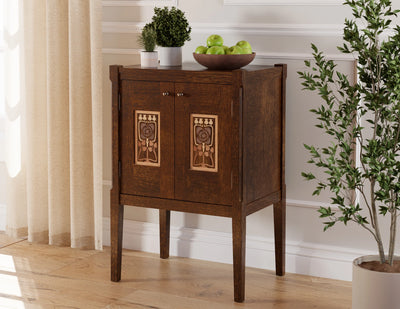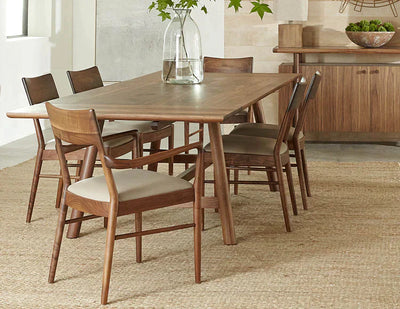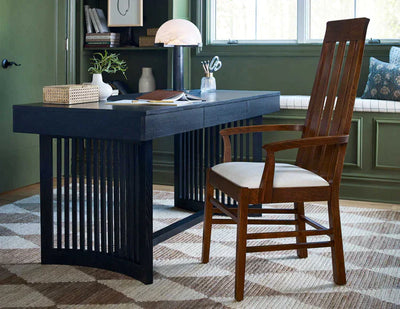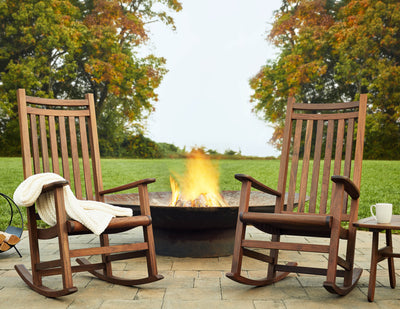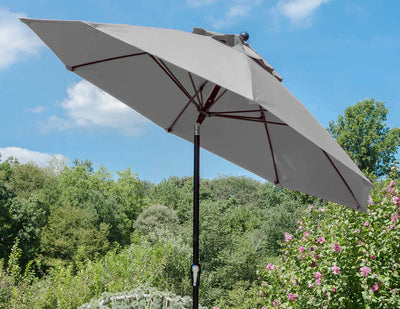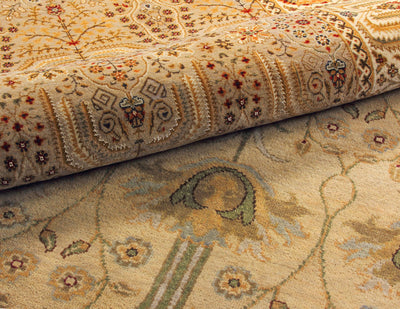About wool shedding
The wool used in many of our Stickley Designer Rugs comes from Tibetan (or Himalayan) Highland Sheep; the elevation and harsh climate of the Himalayas results in the longest stapled wool in the world, five to eight inches! Unlike cheaper, less durable wools, a characteristic of this exceptional wool is a prolonged period of shedding, which will stop over time depending on the wear and use of the rug. Frequent vacuuming (one to two times a week) is the best way to keep shedding under control until it stops. While inconvenient, shedding is in fact a sure sign of the quality and longevity of your wool rug.

Flattening your rug
Your new rug may have been rolled or folded and stored for an extended length of time. Below are suggestions for helping it lie flat and restoring its nap.
- Unroll the rug, flatten it as best you can, and allow it to relax naturally for a few days.
- If the rug won’t flatten on its own, roll it up in the opposite direction to reverse the curling, tie it, and let it rest this way for a day or two.
- Use an anti-slip rug mat under the rug to help keep it flat and in place, or try double-sided carpet tape.
- On a warm, sunny day with temperatures between 75 and 80 degrees, spread the rug outdoors on a clean hard surface like concrete or a wooden deck. The sun’s heat can help relax creases or curls.
- If the corners of the rug curl up, fold them under gently and leave them for a day or two. If they tend to curl under, flip the rug over and fold them as described above. You can also try weighing down the corners with a piece of furniture or heavy books.
- If these methods don’t work, contact a professional carpet cleaner who can use a steaming process to relax creases (be sure they test the rug for color-fastness first).
- If the nap of your rug appears flattened from rolling, vacuuming may help fluff up the pile. If not, use a wide-toothed comb or stiff-bristled brush to comb gently through the fibers, working in sections.
General Care
Your rug is a work of art and deserves the same care and attention you would devote to a fine piece of furniture. However, the hand-knotted rug is constructed in such a manner that with surprisingly little care, it should maintain its beauty and utility for generations.
Vacuum regularly, at least once a week for high-traffic rugs. Regular vacuuming will help remove destructive grit that is tracked on the surface and sifts through the wool fibers to the foundation of the rug. Occasionally, you should vacuum the back of the rug to draw out the very short, light-absorbing bits of yarn that can otherwise dull the luster of the carpet. A good rule-of-thumb is to use low power for low pile and high power for high pile; however, it’s wise to avoid the highest setting. Also, never vacuum a rug’s fringe.
Rotate your rug frequently to allow for equal wear and exposure to sunlight. In high-traffic areas, we recommend doing this once a year.
Wet clean as required, generally not more than once every two to five years, and preferably by a professional carpet cleaner. This will remove the grit and dirt that becomes deeply embedded as well as the surface soiling that dulls the appearance of the carpet. Cleaning should be done only by a professional cleaning service that specializes in hand-woven rugs, and not by a broadloom cleaner unfamiliar with this product.
Deal with stains immediately. Whenever possible, clean a spill before it has a chance to set. First, scrape up any solid dirt or blot up excess liquid with a paper or cloth towel. Depending on the type of spill, a simple variety of household solutions may be used. Scroll to the bottom of this page to find specific stain treatments, as supplied by The Wool Bureau.

